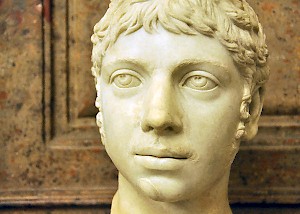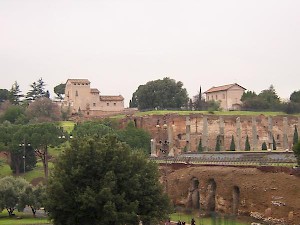Rome, Temple of Elagabal
Q969344Temple of Elagabal: one of Rome's temples dedicated to the Sun god.

The boy-emperor Heliogabalus was an enthusiastic worshipper of the Syrian sun god Elagabal of Emesa, or (as the Romans often called him) Sol Invictus, "the invincible sun". During Heliogabalus' reign, which began in 218 and lasted until 222, he dedicated a temple on the Palatine hill. After all, Elegabal was also a mountain god: his name means "lord of the mountain".
The terrace of the temple, the Elagabalium, had already been built by the emperor Domitian (r.81-96) and there may already have been a place of worship dedicated to Jupiter. Heliogabalus, however, expanded the terrace and rededicated it to Sol Invictus Elagabal.

The second photo shows the terrace from the northeast; the little church to the right, dedicated to the Christian martyr Saint Sebastian, marks the site of the ancient sanctuary. After Heliogabalus' death the temple was once again dedicated to Jupiter by Severus Alexander. Today, the terrace and a few remains in the garden of the church are all that remains.
It seems that Heliogabalus wanted his temple to be a place of worship for Elagabal and two goddesses, as had always been the case in Syria. At the same time, venerating a triad on a hilltop was a challenge to the temple of Jupiter, Juno, and Minerva on the Capitol.
The author of the Historia Augusta reports that after building the temple, Heliogabalus moved the emblems of the Great Mother, the fire of Vesta, the palladium (a statue of Minerva), the shields of the Salii and other sacred objects to the new building.note
For traditional Romans, these were extremely sacrilegious acts. For instance, the statue of Minerva had always been hidden from sight and was not to be moved from its place - and yet the emperor had not only entered the holy temple, but had also touched the statue, and had even ordered its removal. He soon gave back the statue under the pretense that his god was displeased with the goddess. Instead, the goddess of the celestial Venus (Tanit) was ordered to come from Carthage.
In front of the sanctuary, on its western side, was a large, five-arched gateway of which a few remains are left. When you enter the little modern gate, you reach the church garden.